Winners of #protocomp2015
Wow.
We are kinda speechless right now. We have to gather our thoughts and take a deep breath. Right now we want to share some photos though 🙂
Wow.
We are kinda speechless right now. We have to gather our thoughts and take a deep breath. Right now we want to share some photos though 🙂
We’ve had an amazing time during the course of launching and coordinating #ProtoComp2015 in partnership with Unisys. Week 3’s Crash Courses and prototyping work sessions are set to begin tomorrow evening, and we wanted to take a moment to announce our Judging Panel that will assess the teams final product on May 13th.
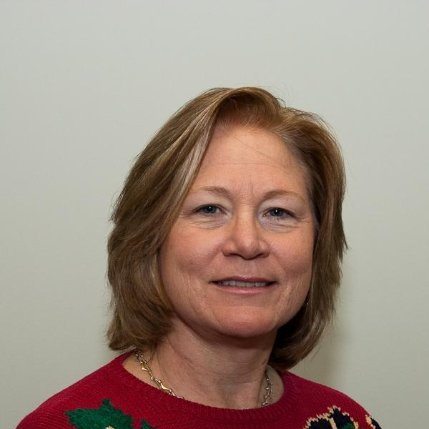 Christina Watters – Christina is a Consulting Engineer in the Forward/ClearPath Forward Engineering organization at Unisys Corporation in Malvern, PA. Christina is responsible for business and engineering process architecture including the selection of open source tools that facilitate software development, build, release, and test, supporting Agile environments. She was instrumental in engineering the framework for open source technology compliance and is currently driving the software distribution model.
Christina Watters – Christina is a Consulting Engineer in the Forward/ClearPath Forward Engineering organization at Unisys Corporation in Malvern, PA. Christina is responsible for business and engineering process architecture including the selection of open source tools that facilitate software development, build, release, and test, supporting Agile environments. She was instrumental in engineering the framework for open source technology compliance and is currently driving the software distribution model.
Christina has been with Unisys for over 37 years. During this time she has managed geographically diverse software and hardware professionals and provided leadership in process design for ASIC’s, printed circuit boards and hardware and software projects. Christina has a BS in Legal Studies from Kaplan University, holds three process patents and is a certified SCRUM Master and Agile Product Owner.
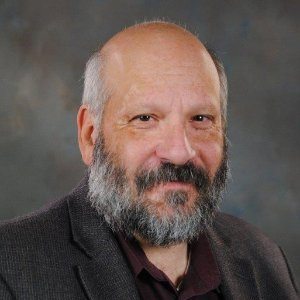 Jim Thompson – Jim is the Chief Engineer and Vice President of Engineering and Supply Chain at Unisys. In this role, Jim is responsible for the design, development and manufacture of technology products that align with the Unisys’ strategy and marketplace needs.
Jim Thompson – Jim is the Chief Engineer and Vice President of Engineering and Supply Chain at Unisys. In this role, Jim is responsible for the design, development and manufacture of technology products that align with the Unisys’ strategy and marketplace needs.
Jim’s career with Unisys spans 27 years in various customer facing and engineering roles. He is also responsible for creating the vision and architecture for Unisys’ modern mission critical products such as ClearPath, Stealth and Forward! Prior to joining Unisys, Jim held various technical positions in financial institutions and commercial firms, as well as being an independent consultant.
Jim holds technology patents in the areas of operating systems, storage and banking. In 2015, in recognition of driving innovation at Unisys, Jim was awarded the prestigious Corporate Innovation Award by the Institute of Electrical and Electronics Engineers (IEEE), Philadelphia Section.
 Michael Salsburg – Michael is the Chief Architect for Unisys cloud solutions. He’s been fascinated by computing and automation since he was 14 and has been in business for well over forty years.
Michael Salsburg – Michael is the Chief Architect for Unisys cloud solutions. He’s been fascinated by computing and automation since he was 14 and has been in business for well over forty years.
Michael’s career at Unisys has taken a lot of twists and turns. He admits to being somewhat of a recidivist. He worked for Unisys from 1982 to 1990, and then left Unisys to create his own company called Performance and Modeling. As a consultant, he worked with Unisys and other companies to model computer performance and predict its impact on application service level objectives.
Before leaving, Michael was the architect for all Unisys performance products. His company was bought by a rising star in Silicon Valley, for whom he served as CTO and corporate officer.
In 2002, Michael returned to Unisys and have continued pursuing the idea that computing should be focused on optimal delivery of services to the business. Infrastructure based on cloud concepts provides the foundation to achieve this goal. He’s written over 60 papers on these concepts and presented them throughout the world.
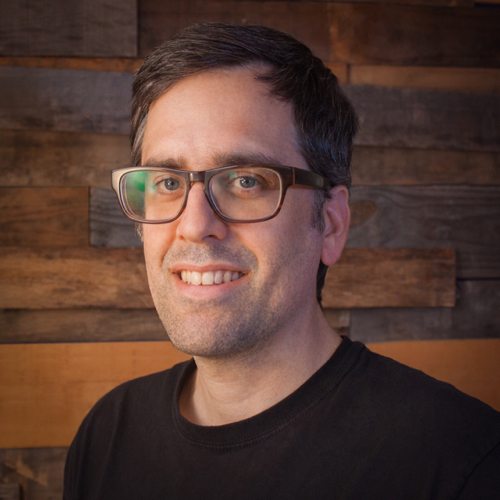 Chris Dima – Chris launched Walnut St. Labs in December 2013 with the help of a community of innovators in the area. He leads strategic development at Walnut St. Labs, including the overall model, the incubator and partnerships.
Chris Dima – Chris launched Walnut St. Labs in December 2013 with the help of a community of innovators in the area. He leads strategic development at Walnut St. Labs, including the overall model, the incubator and partnerships.
Walnut St. Labs is an innovation lab in downtown West Chester, PA. It’s provides co-working space, a robust events calendar, including two weekly events, and an early stage incubator. Walnut St. Labs is focused on developing its new model that will more efficiently productize and commercialize early-stage innovation — assisting innovators getting new ideas to market.
Chris drives strategy and business development for MongoSluice, cutting-edge big data tool. MongoSluice dynamically creates schema from unstructured data in NoSQL and then streams strongly-typed data to any RDBMS datastore.
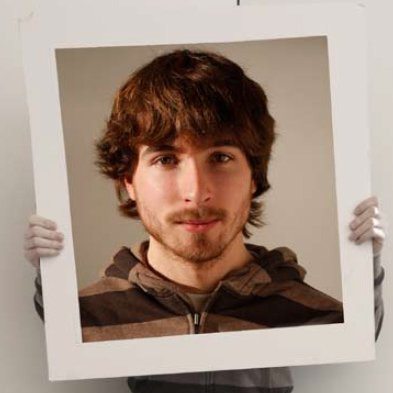 Peter LoBue – Peter‘s educational background was driven by his passion to learn about how computers work. Research in Human Computer Interaction and Design Thinking has since attracted my attention to caring more about how people work and how technology influences their behavior.
Peter LoBue – Peter‘s educational background was driven by his passion to learn about how computers work. Research in Human Computer Interaction and Design Thinking has since attracted my attention to caring more about how people work and how technology influences their behavior.
As an Experience Designer, Peter has had the pleasure of solving human problems, making use of my technology skills and collaborating with all types of personalities and roles. His most recent employment provided him with experience in a wide range of projects, from the more technical sides of design (usability, interaction design) to more strategic (service design, web strategy) facets.
Peter led #ProtoComp2015’s Week One Crash Course on rapid prototyping and showed the contestants how to create an effective user interface design, including how to test assumptions with potential users and incorporate findings into the design process. Rapid prototyping is the activity of tweaking your prototype over time to get the desired feedback, while also visually documenting your findings. He discussed the process in detail and presented some killer examples.
Throughout the process of the Unisys/Walnut St. Labs’ Prototyping Competition (#ProtoComp2015), the Walnut St. Labs team regularly congregates to plan the coordination of its upcoming installments. Each week, we find ourselves continually saying, “Surely this week we’ll have a smaller turnout and things will finally start to dial down”, and each Wednesday we are confronted with just how high the level of extinction rate truly is for this event. People are so excited to come back each week, learn new things and show us made they’re made of. It’s been super exciting!
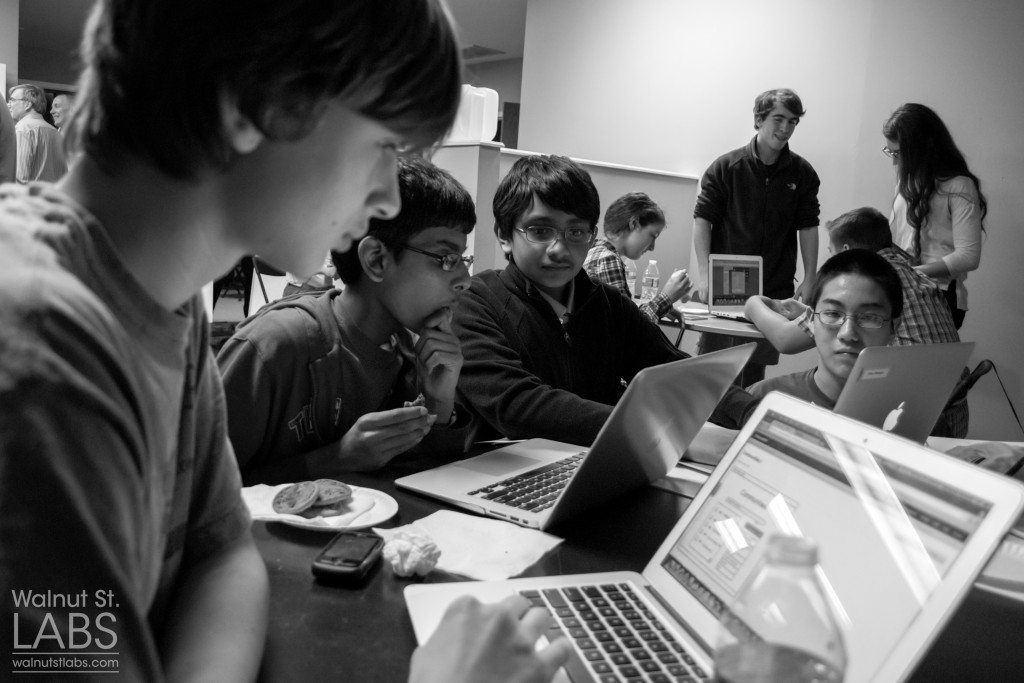
We’re ending out Week Two of with almost every representative of each team present for tonight’s bootcamp and advisement sessions. Despite the fact that we’ve tailored a variety of content to aid in the process of building a User Interface, much of the wireframes’ architecture is left to be imagined by the group. It’s inspiring to see each team form uniquely interesting approaches and finding different means to execute their directives.
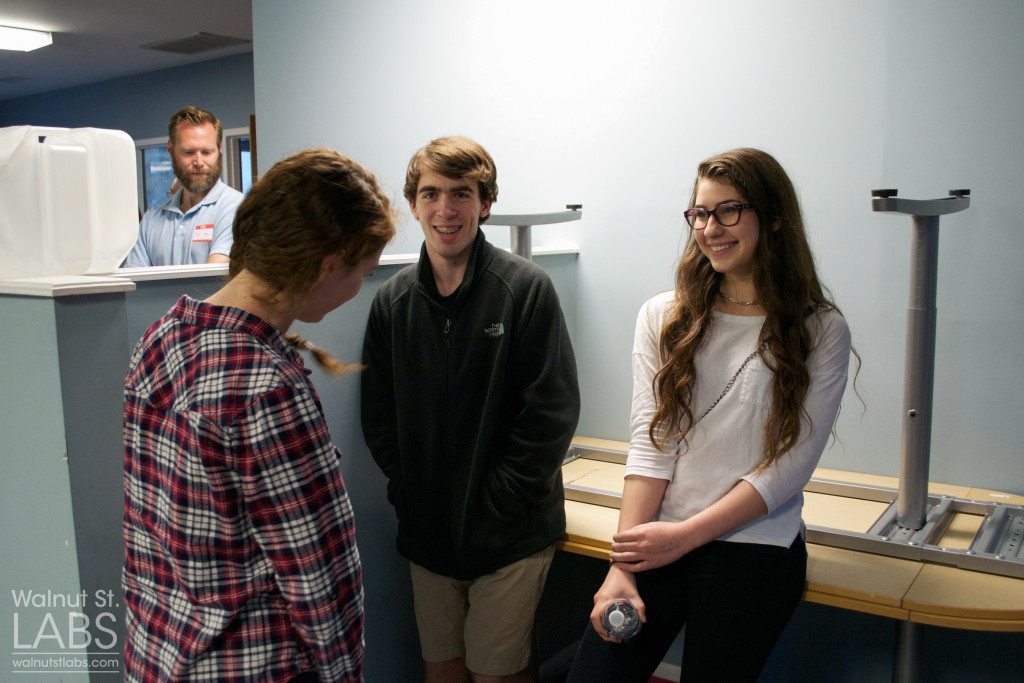
At such a pivotal stage in the competition, teams are responsible for transitioning between throwing ideas at the wall and seeing what sticks to turning their best ideas into a tangible and organized deliverables. Brainstorming is one thing, but really sculpting one’s ideas into an effective end product is an entirely different animal.
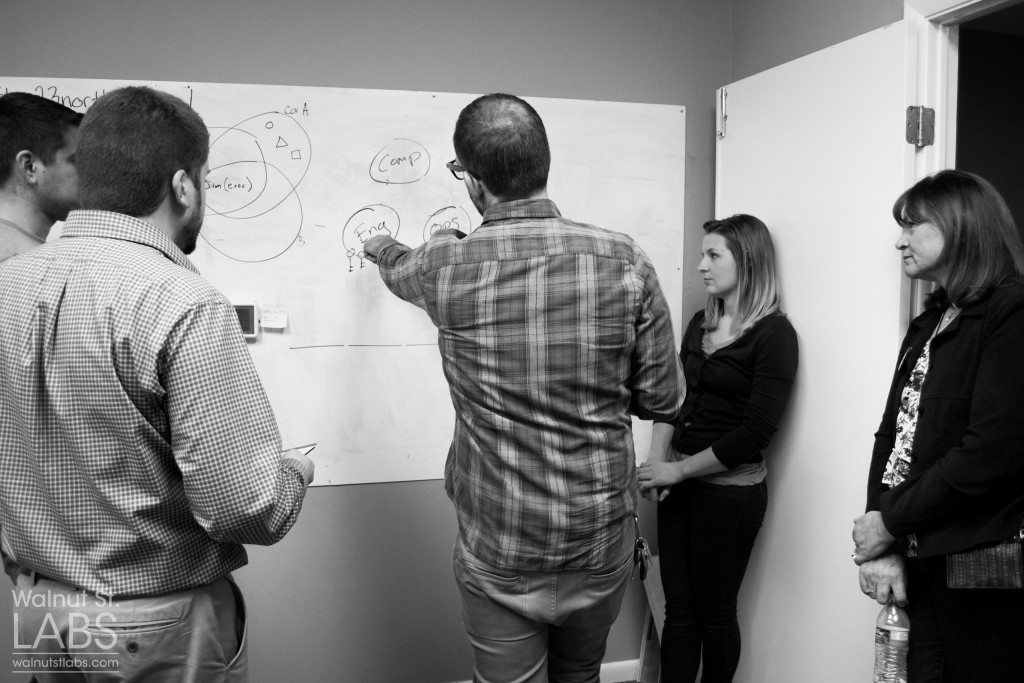
Breaking out of our existing thinking, to create an innovative and effective product, is as much inspiration as it is process. Chad Wingrave hit on what it means to be creative and what is takes to turn those creative juices into a product, or productize it. He discussed the methods to rapidly explore design ideas, and end with approaches for quick and dirty evaluations that shape further design.
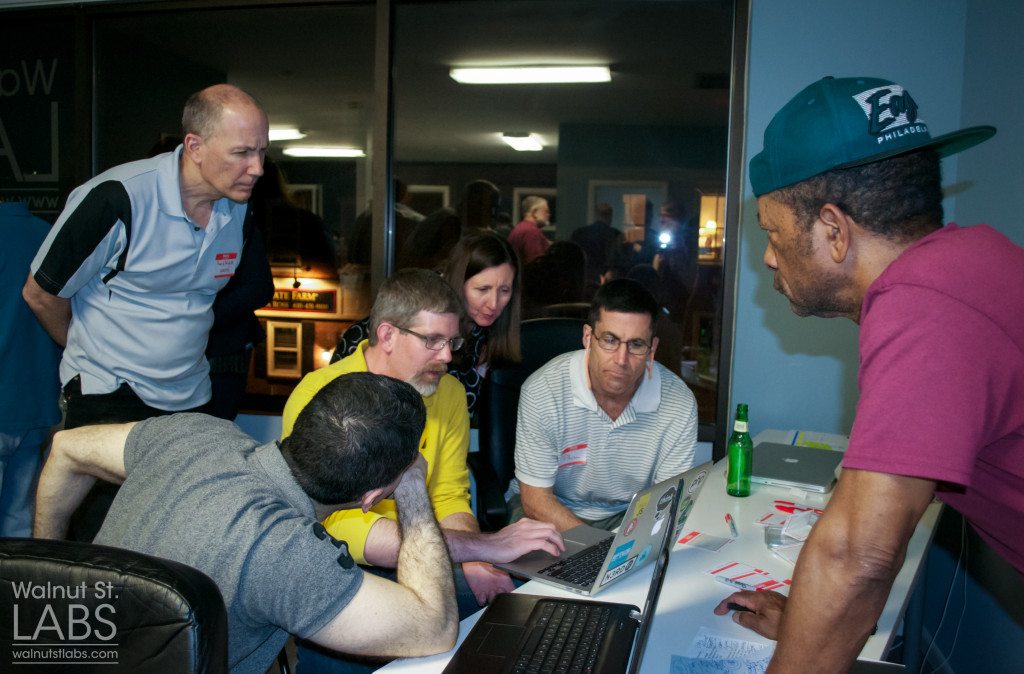
#ProtoComp2015 is breaking new ground. We’re creating a platform for interested parties to learn new skills and be given the chance to build something new, in a collaborative and supportive environment. We want to see our community grow and adapt with us and we’re incredibly grateful to see how incredibly enriching the entire experience has been for all involved parties.

Traditional methodologies have suggested that organizations lacking in immediate or specialized internal skills to necessary to execute new projects should focus on more cost effective solutions, like outsourcing. Within recent years, the wide spread organizational pivot to outsourcing has all but taken over. Countless creative projects have since been redirected towards crowdsourcing solutions and the momentum by our account seem to be picking up.
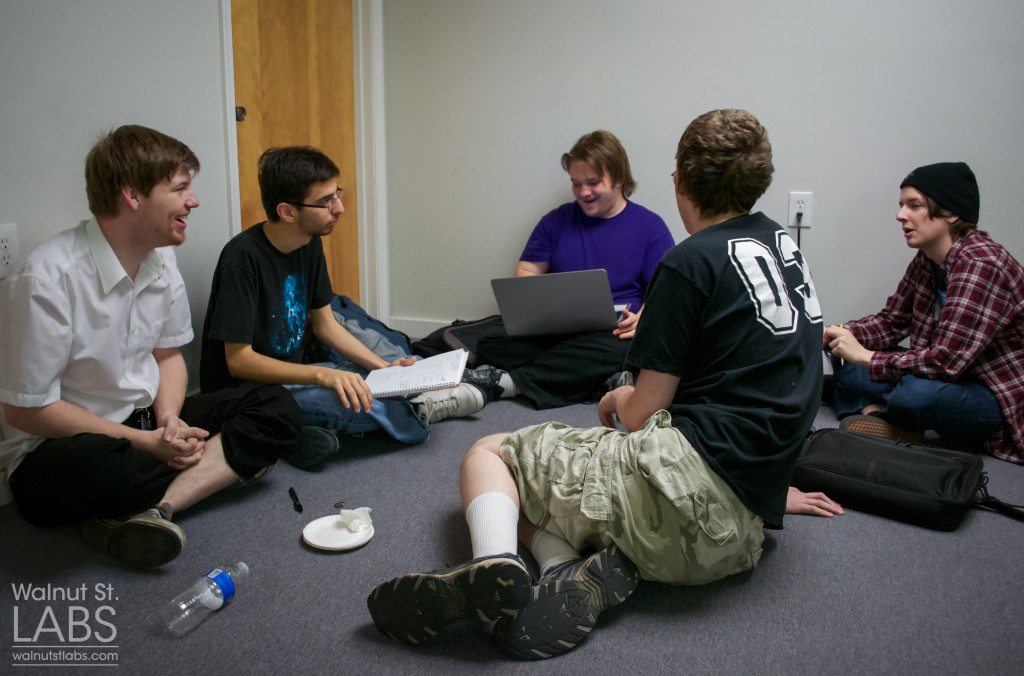
Crowdsourcing changed the game and provided a new way to keep creative efforts cheap and local. Instead giving away all our creative potential to other countries, lets put our heads together and create something awesome! Jim Thompson illustrates, “I truly believe this is what the future of R&D looks like. Forget outsourcing, nothing quite like collaborative organic development to challenge the status quo and get out of the box. Think of it as Crowdsourcing 2.0!”
Week One: The Competition Begins
The Launch Party last week was a total blast, but the real ‘meat and potatoes’ of this project, the creative core, has only just begun. We were floored to see the extent of community interest at #ProtoComp2015 launch, and were futhermore encouraged to see that almost everyone who partied with us last week, not only signed up, but showed up for Week One to compete.
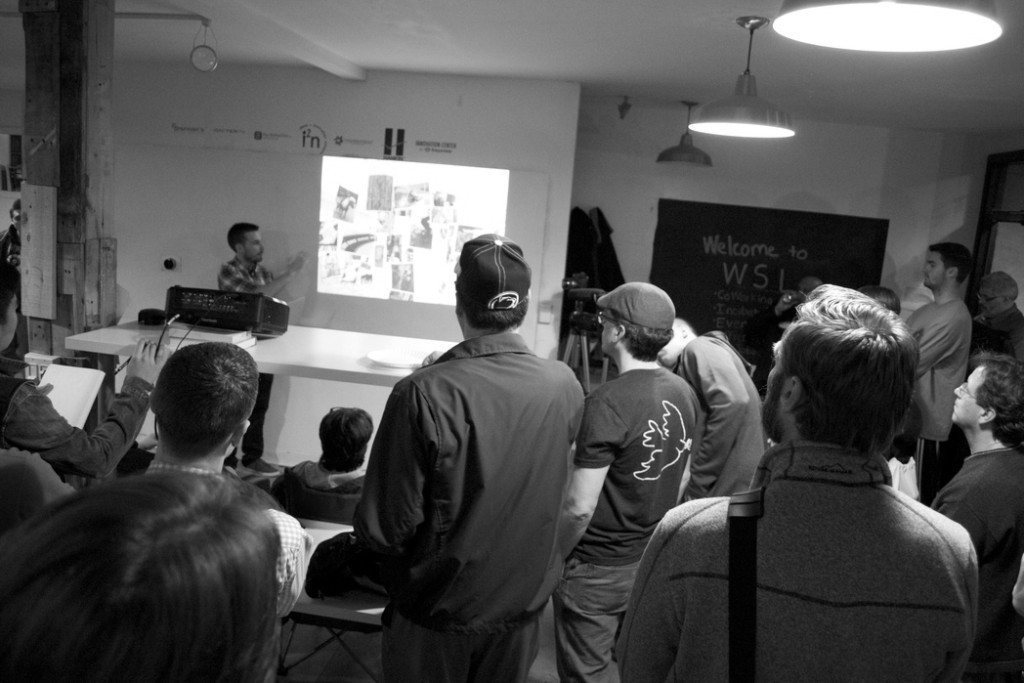
The teams got the Unisys’ backstory from Jim Thompson, the VP of Software Engineering and Supply Chain. He was able to shed some light on the Unisys’ 118 year-long challenge with building design elements, that began with the typewriter.
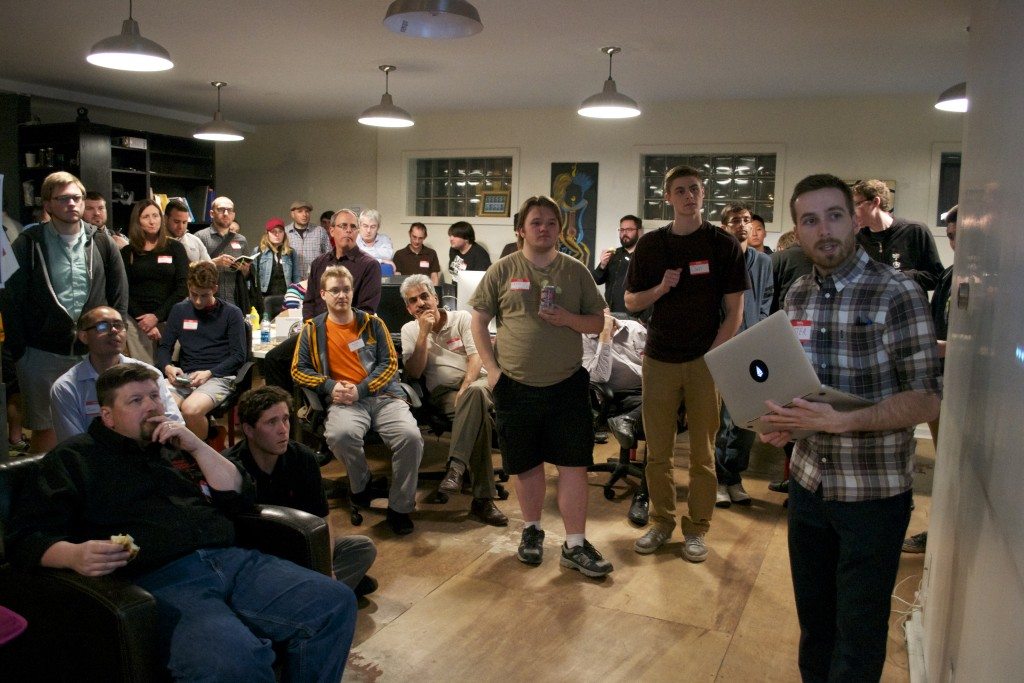
Local UI and UX Designer, Peter LoBue, explained that to create an effective user interface design, you must test assumptions with potential users and incorporate your findings into the design process. Peter showed the power Rapid Prototyping by explaining the process of tweaking prototypes over time to get the desired feedback, while also visually showing how to document your findings.
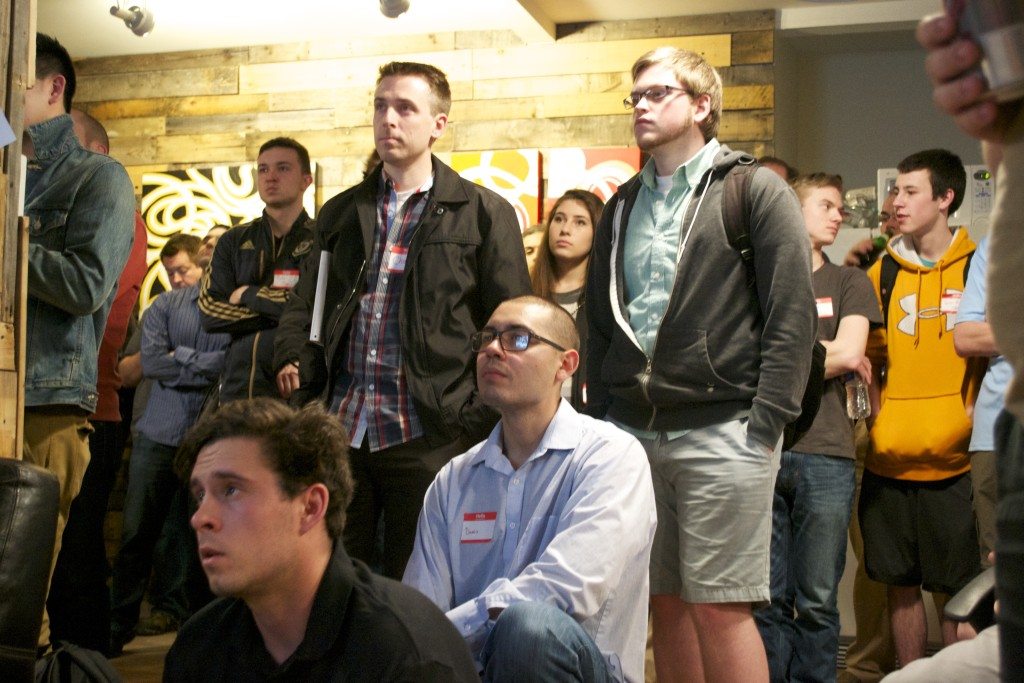
Peter introduced a UI design tool to the #ProtoComp2015 team that is taking the design world by storm. InVision is making the designer iteration process so that virtually anyone can take a solid design idea and create a professional-grade design element, or wireframe. InVision’s work to created such an accessible utility seem like the perfect candidate for a competition such as our with an identical mission.
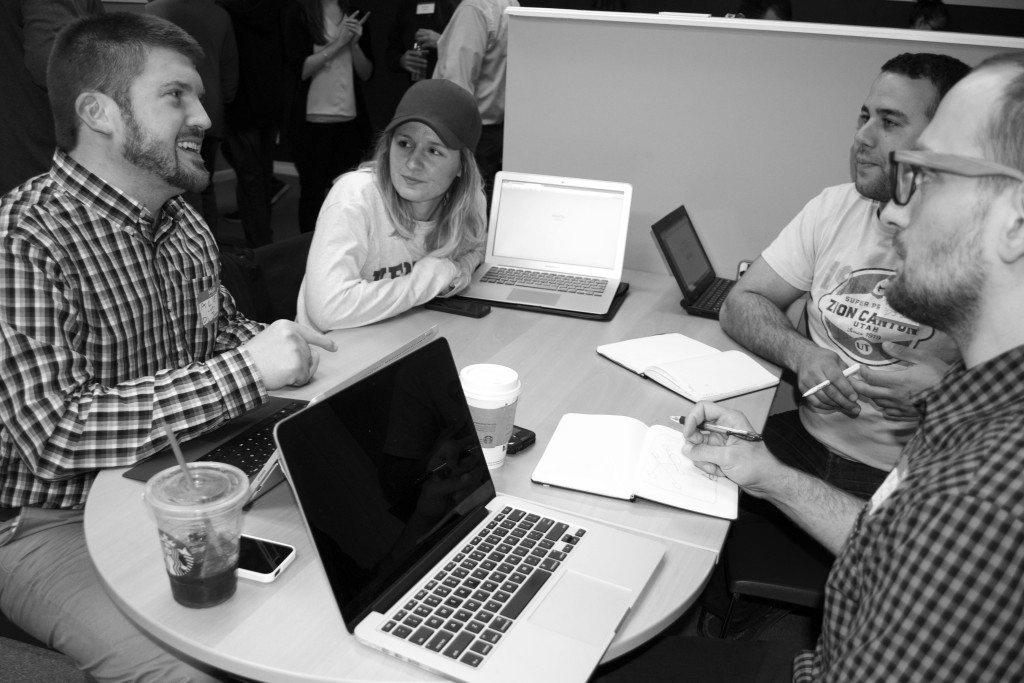
Kyle Nahrgang of Unisys shared how Agile + Scrum methodologies streamline team-based software engineering decisions and action plans by encouraging thorough organization and constant feedback. With Agile + Scrum, a team will have a clear understanding of the work that has been done, is being done and will be done. This crash course focused on the basics of what Scrum is and how it’s helpful.
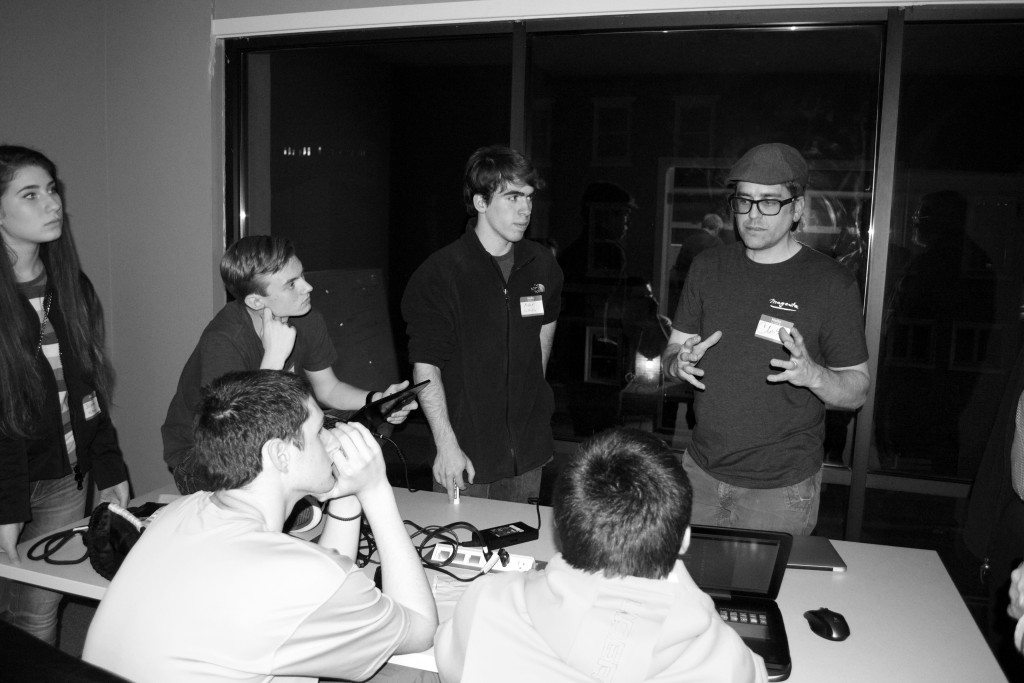
Very few places in the United States are opening their doors to facilitate conversational level technology education, and offering an inclusive opportunity to build something from scratch in a creative group environment. The work we’re doing is setting the pace for what for-profit organizations and educational institutions will do in the future, and we don’t take this lightly. We’re grateful to all the people that collaborated with us on Week One and we can’t wait to see what comes out of Week Two. Thank you for recognizing that the best way to buck ‘Status Quo’ obsolescence is to actively work towards the solution. Walnut St. Labs is raising the collective consciousness of technology one event at a time. Join us.
The Walnut St. Labs Team and a few key Unisys people, namely Brittney Burchett, have busted their humps to ensure that our Prototyping Competition was a complete and utter success. There were a number of immediate challenges that beset the group in light of the event’s more “nuanced” format. The most blatant of which was the problem of ambiguity.
We blasted out emails and targeted newsletters, posted blogs and social media campaigns, got featured in a Technical.ly Philly article, passed out flyers to West Chester University’s brightest, and probably bugged the sh*t out of everyone we knew, but the questioned still remained, “What the hell is a ‘no code’ hackathon?”.
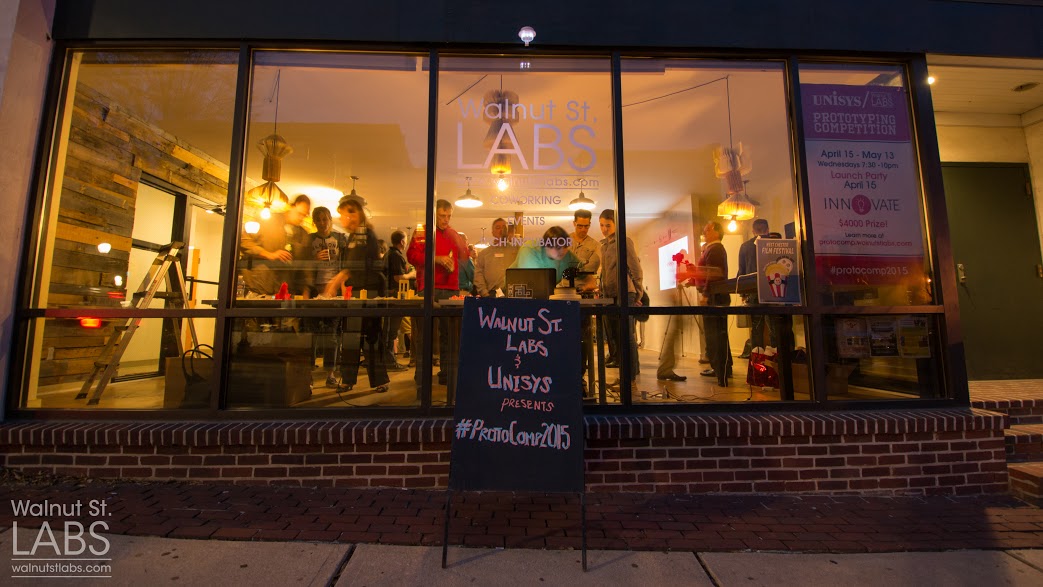
Despite the presence of some trailblazing-related obstacles, last night’s turnout was further validation that an inclusive framework for building competitions is really the way the go! Our recent mention in About.com’s article pretty much sums up the ethos for this event, “You don’t need to code to be in tech.”
We’re used to sweating bullets at Walnut St. Labs because we do events all the time, but this time was special. We had 20 pizzas on the way, a blank sandwich board, five cases of beer, a couple waters, a cobranded sheet cake and 100+ people registered to cram themselves into our space. Our team had ascended to a whole new level of uncertainty that few human beings are capable of sustaining. Luckily, its part of our organizational values. We find that comfort zones are a killer of rapid progression.
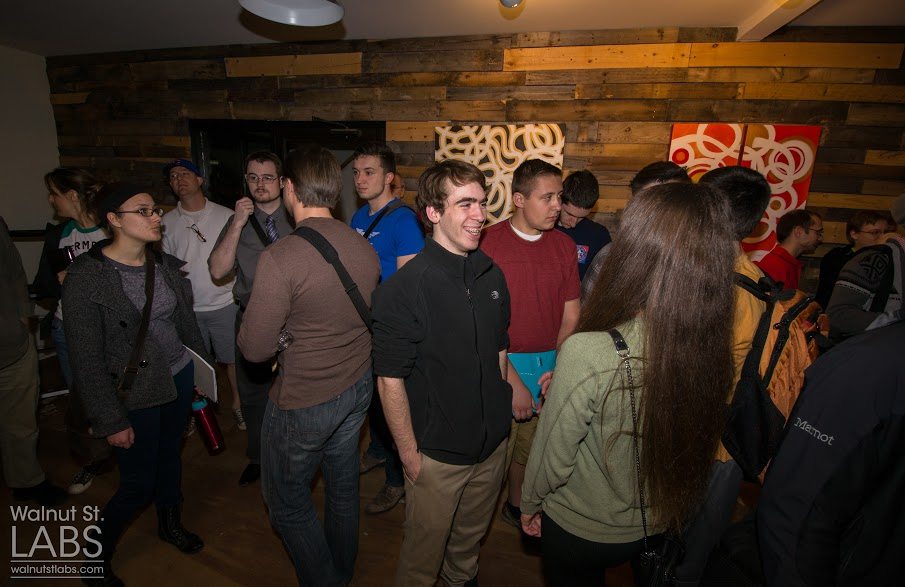
Brittney did an awesome job reaching out to various educational institutions who are leading the way in #edtech. Very few schools are aware of the disparate gap that lies amid a hungry tech job market and a dearth of available and qualified technologists, much less ambitious enough to bridge that gap. It was refreshing to see that so many of our contestants were young and, to some capacity, technologically adept.
STEM Academy and The Westtown School are two such institutions that really “get it” and are providing their students with opportunities to gain functional/practical knowledge for a digital age. Our hope is that the reverberations of such novel concepts will be heard by more conventional institutions who focus on fact recall.
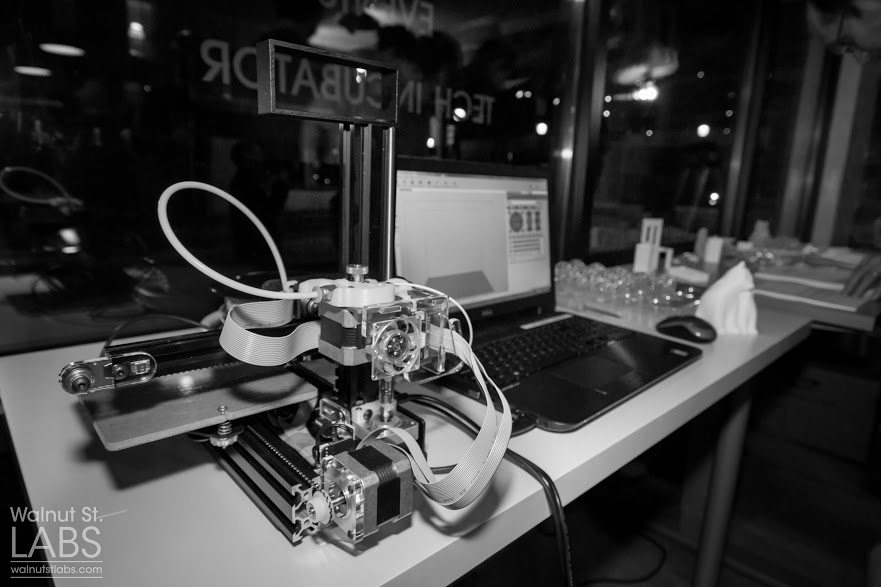
Our launch party was the first time that we had the chance to show off the 3D printers to the public, and it was a total hit! While running the gauntlet with Unisys, we’ve also partnered with NextFab to create a “Mini Makerspace” at WSL. The mission is to expand the reach of newer fabrication technologies to populations that might not otherwise get the exposure. Wilhem Barnes did an incredible job entertaining a hoard of STEM Academy students. They really couldn’t get enough of the Bukito.
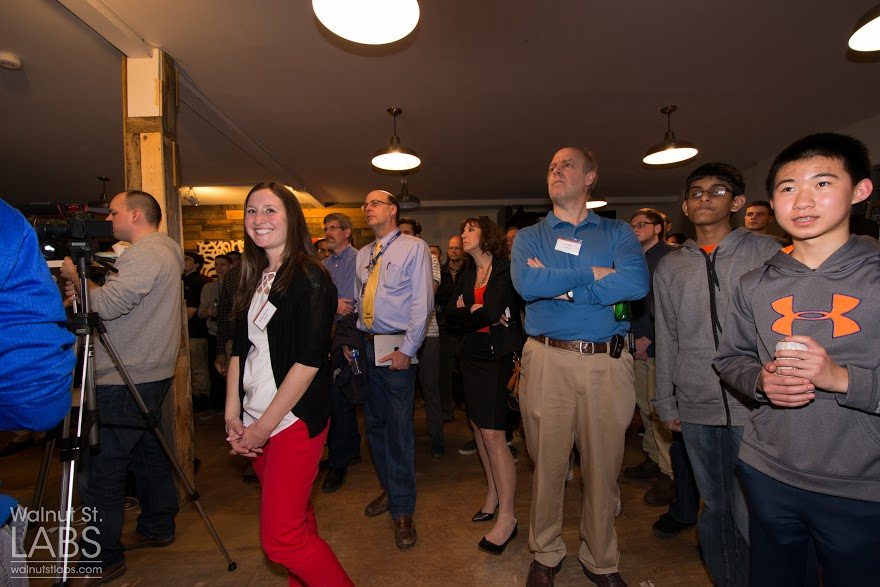
Brittney Burchett has worked really hard over the last several years to pioneer a whole division dedicated to innovative projects. Last night was a culminating experience for her, and it really showed! She was elated (and beaming!) to see these efforts displayed in the form of a community coming together to build teams and solve problems.
We’re infinitely grateful to her and Jim Thompson, the VP of Engineering and Supply Chain, who’s led the way in visionary efforts at Unisys for over 25 years.
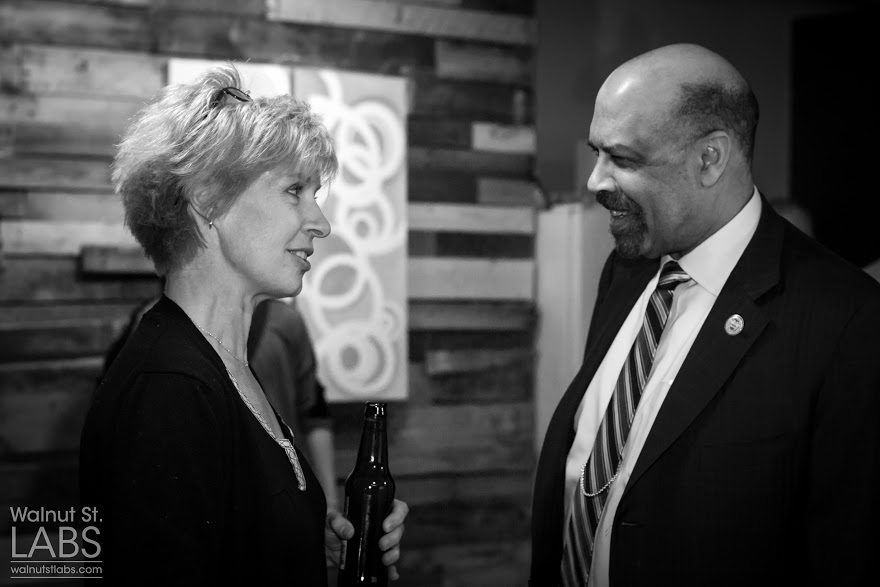
Mary Fisher (pictured above with Commissioner Terence Farrell) was recently named Chief Operating Officer of Walnut St. Labs by our Founder, Chris Dima. She’s helped coordinate all aspects of Walnut St. Labs’ primary source of income, 23 North Digital. In addition to playing a leading role at our digital marketing company, Mary is also a mother of four. Her music choice is indicative of the combined weight of both her work-related and domestic responsibilities, ‘Deep Jazz’.
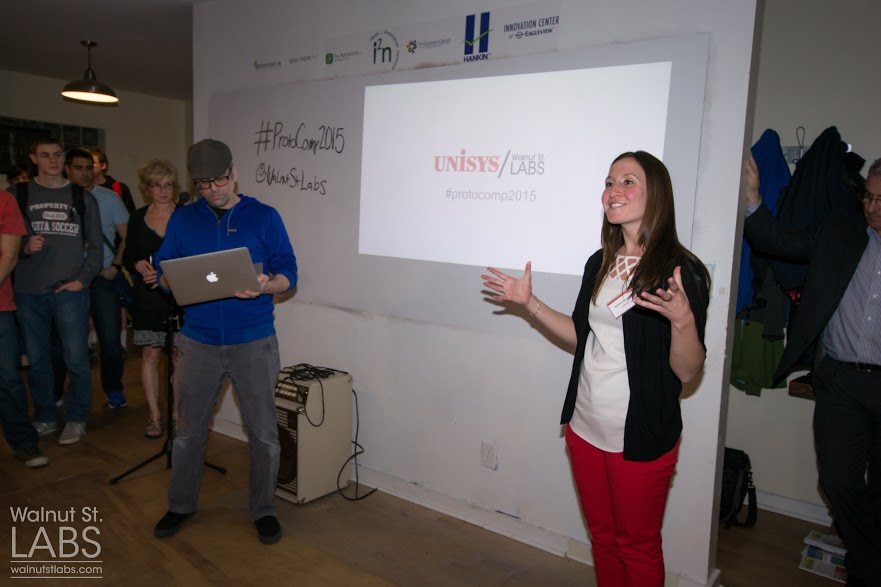
Chris explained how our relationship with Unisys was the result of continued serendipity. His neighbor and Score members, Bob Fedor, introduced David Houseman to Chris at our 2nd Startup Meetup. David was a former COO at Unisys, loved what we were doing and, in turn, introduced Chris to Jim Thompson.
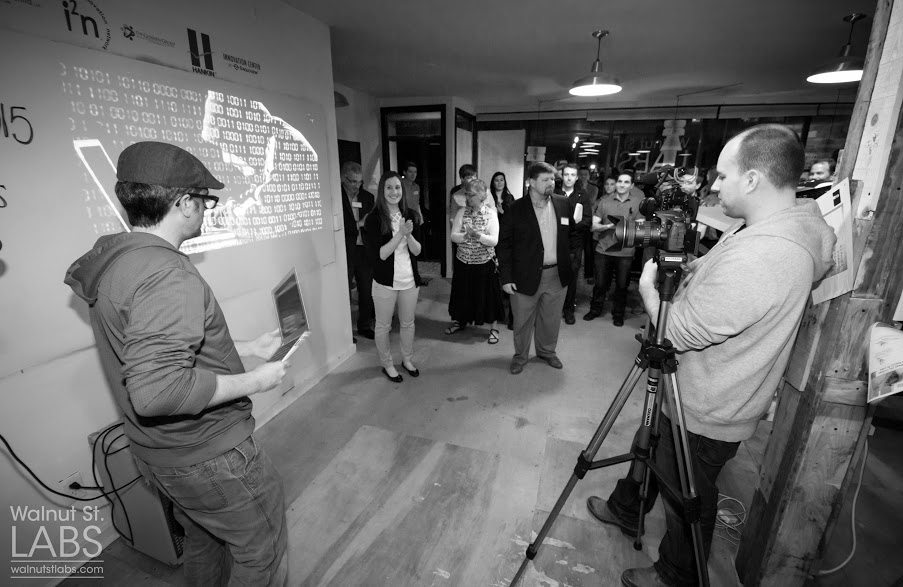
Walnut St. Labs was tasked with the unique opportunity to convey a piece of highly technical internet security software to a group with varying levels of technical skill, in a party setting. We didn’t want to ‘kill the vibe’ by diving straight into the deep-end, so Chris and Brittney kept it light and fun, while informing the group about the importance of STEALTH’s social and economic context.
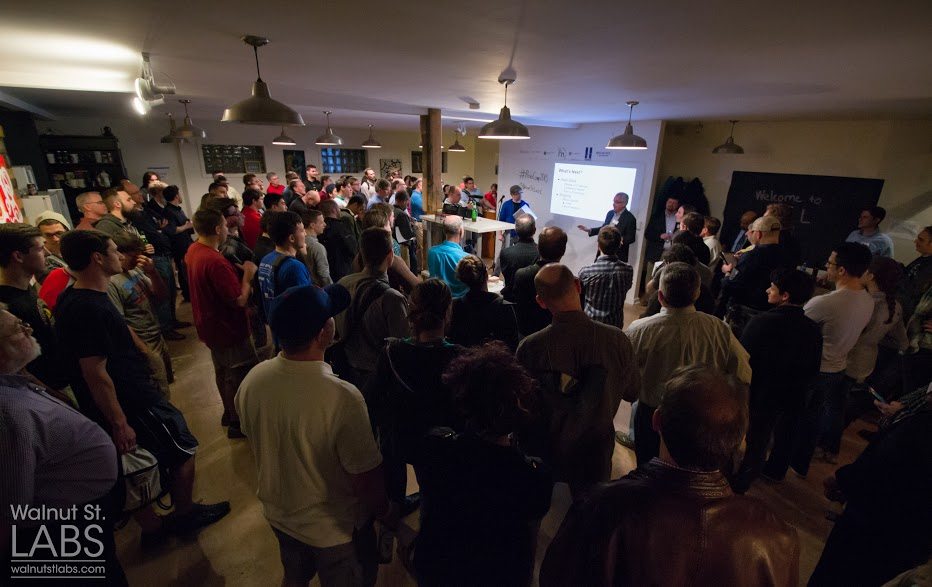
The truth is that some of the content from last night’s presentation was pretty heavy, but Chris did a great job of conveying the concepts with the oldest tactic found in “The Art of War”—humor. His decision to rely on the mystifying charm and energy of America’s most recognizable TV exercise personality was just what the doctor ordered.
Despite Richard Simmons’ more laughable attributes, he is the basic archetype for our Prototyping competition. As Chris so clearly stated, “It didn’t matter who you were or where you came from, Richard Simmons would include everyone”.
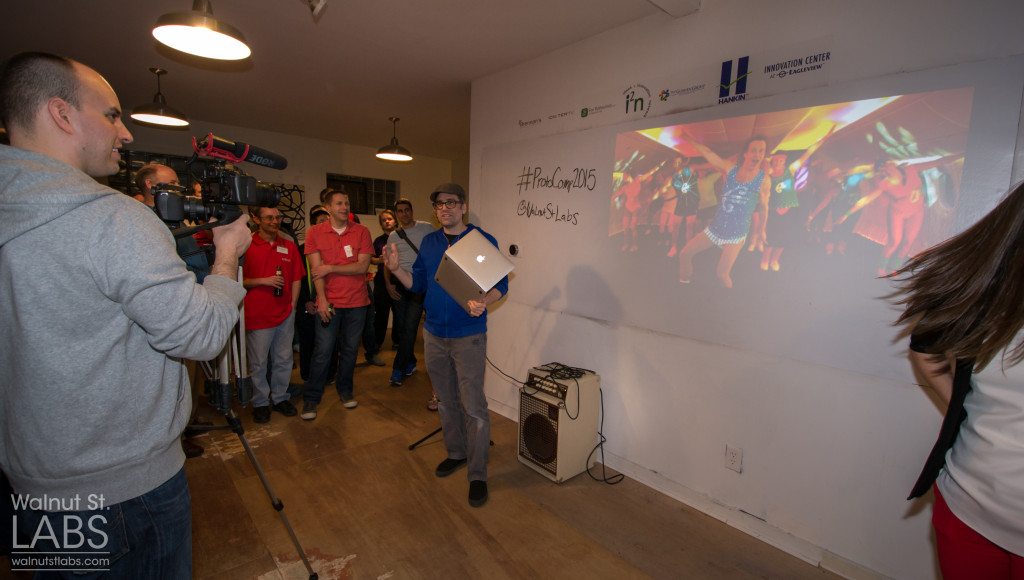
It may seem like a strange call to action, but Richard Simmons inclusive approach to exercise was a perfect candidate to drive this point home to our audience. We don’t care how experienced or well equipped you are. We just want to give you an opportunity to create with us.
Innovation favors those who question the norm. If the current perception of technology suggests exclusivity, then we need to relinquish all barriers that reinforce that perception and actively promote inclusion.
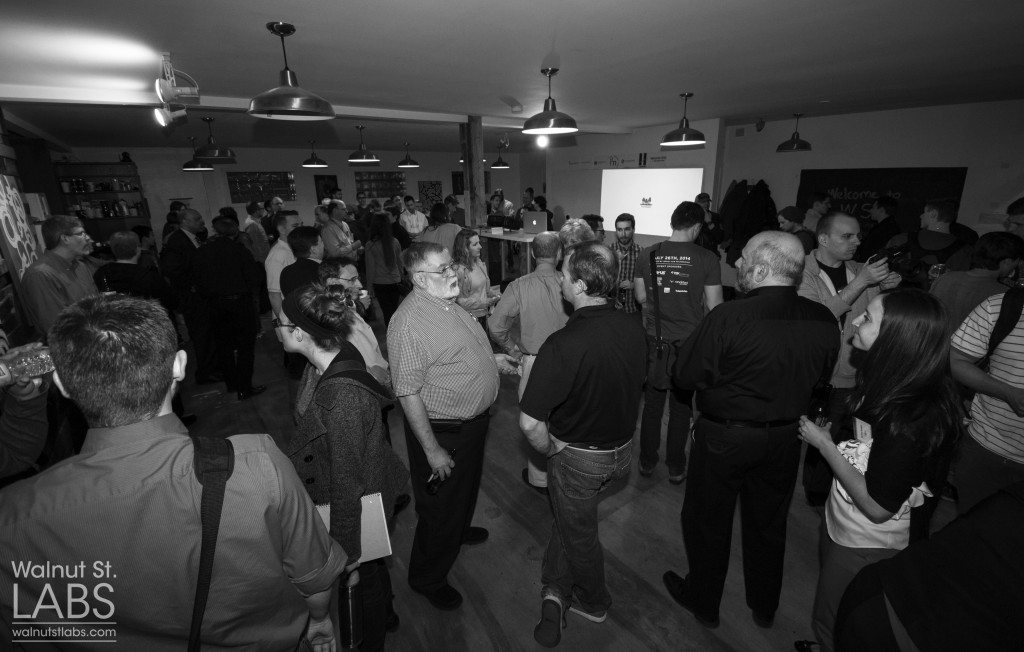
It was wild and crazy, but we were able to form 17 different teams, some of them containing up to five contestants. Many groups came prepared to sign up together, others entered alone and joined a team on the spot. We ended the night in a general state of disbelief. We had high hopes for this kickoff and we were able to supersede them.
We’re looking forward to the next 4 weeks where we turn the party into prototyping!